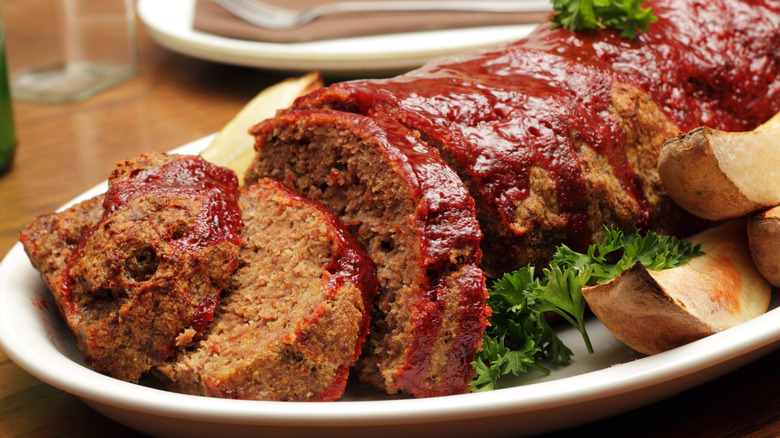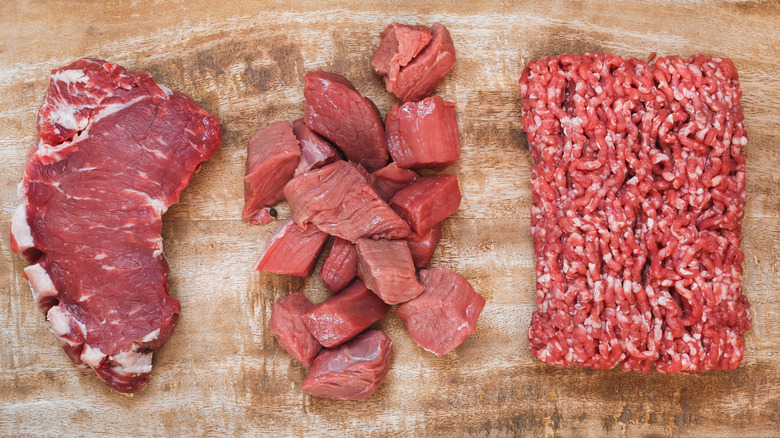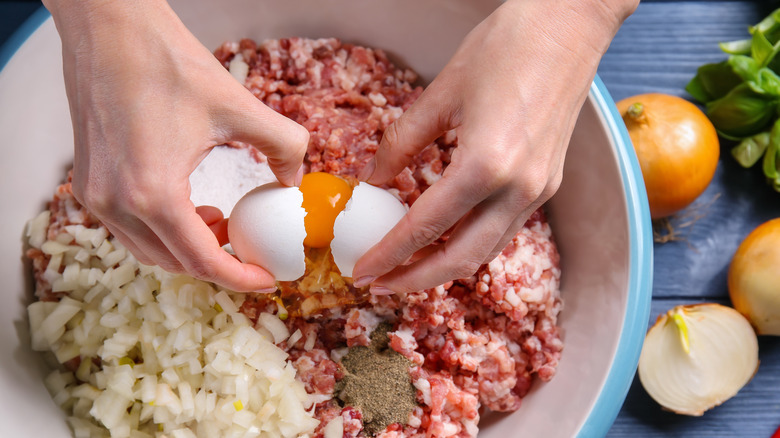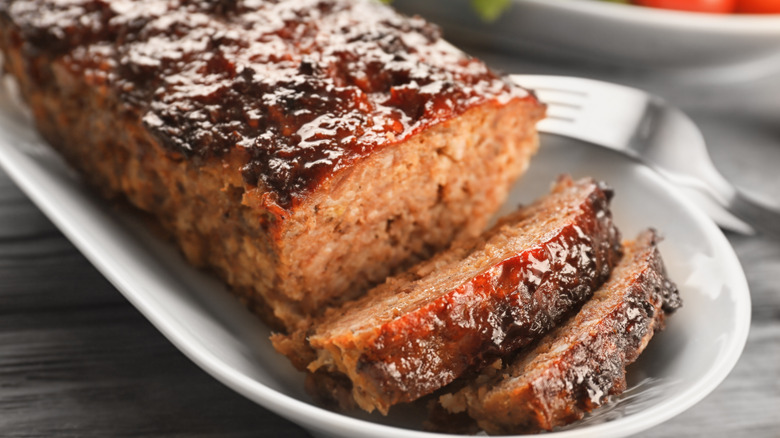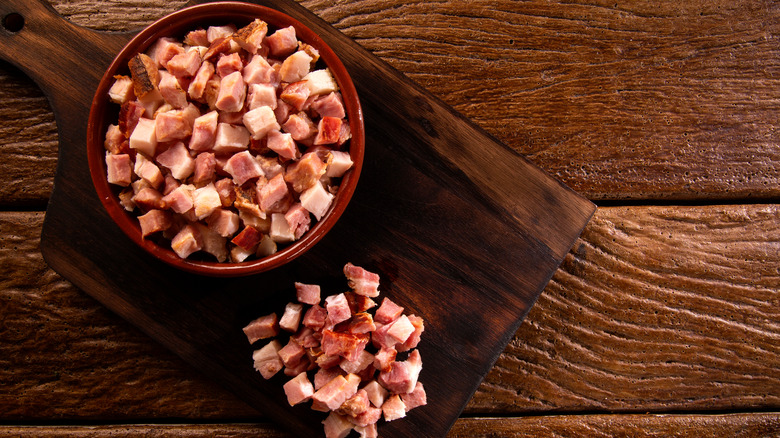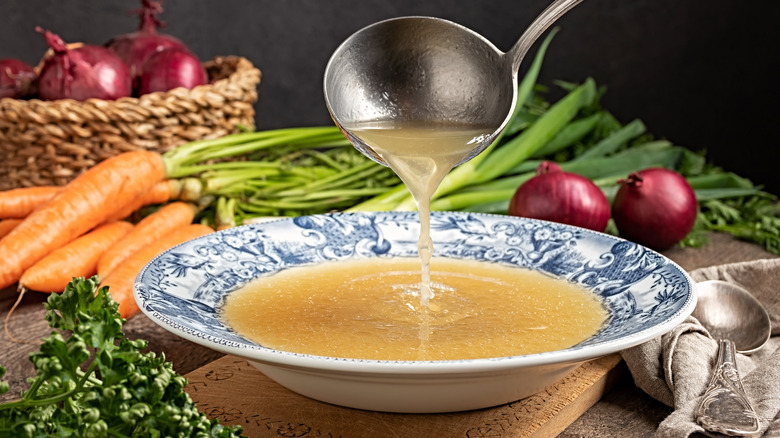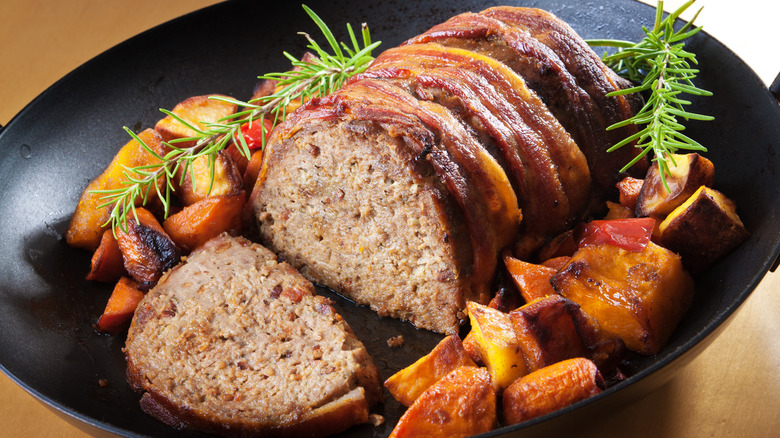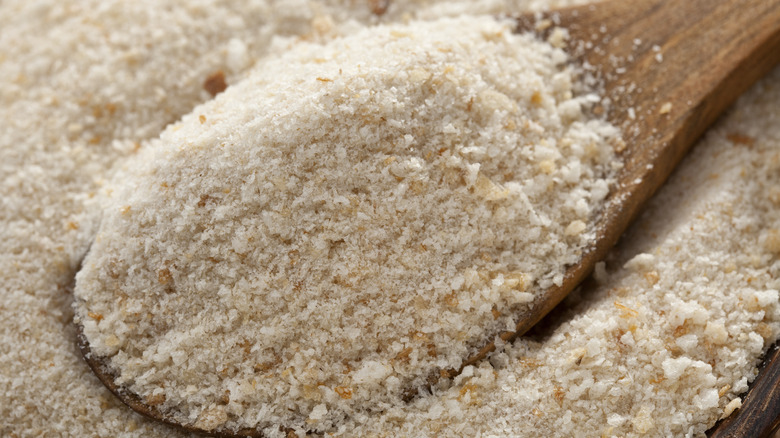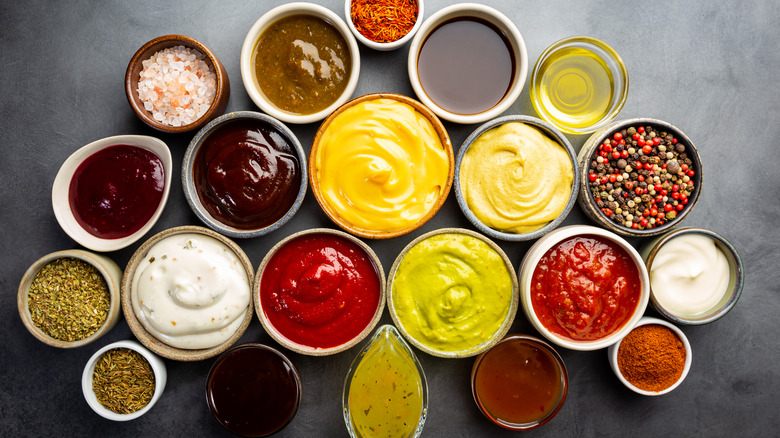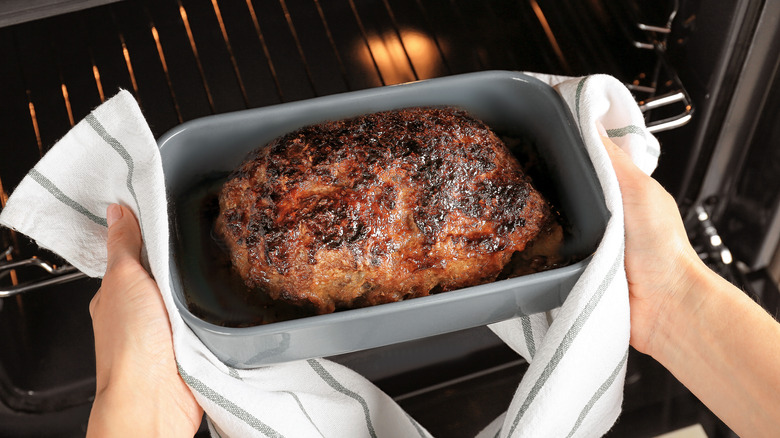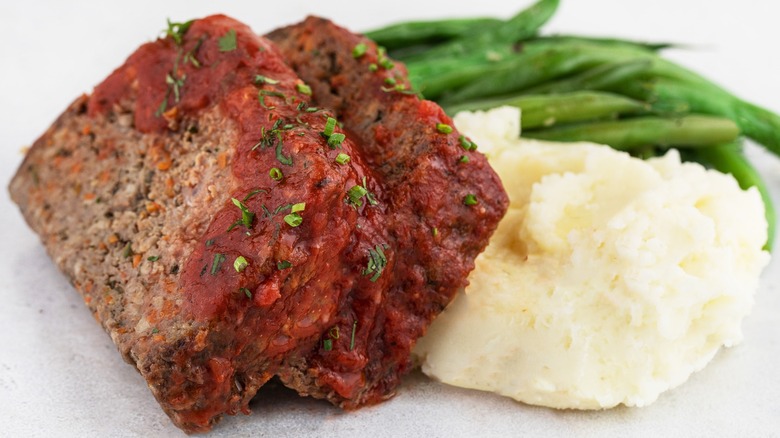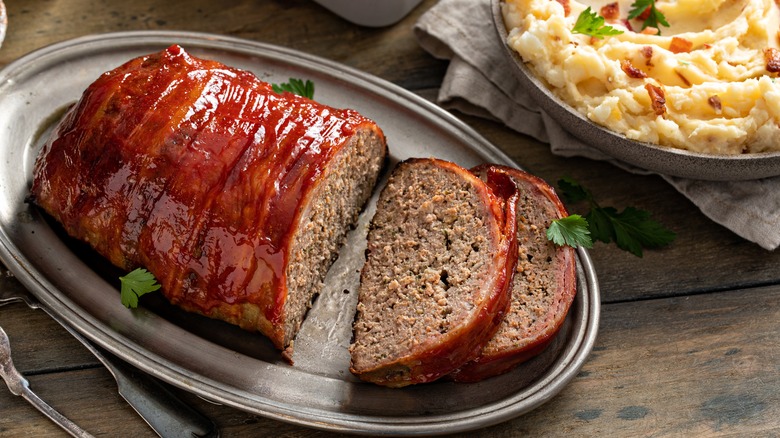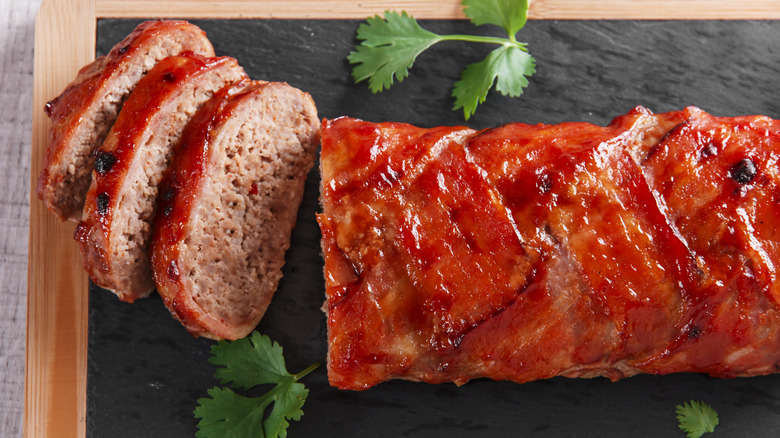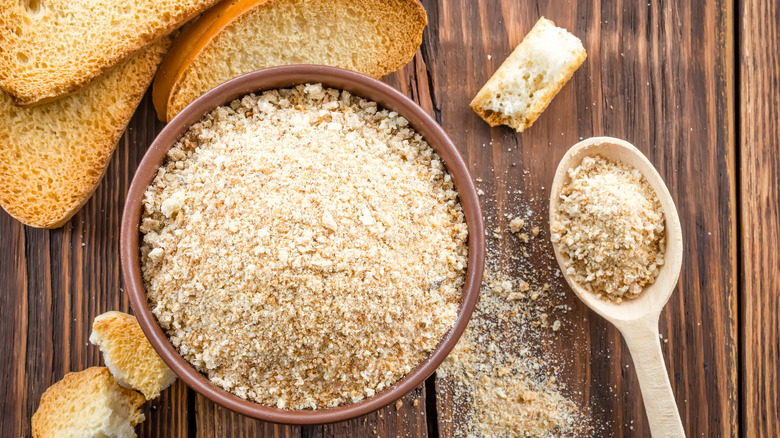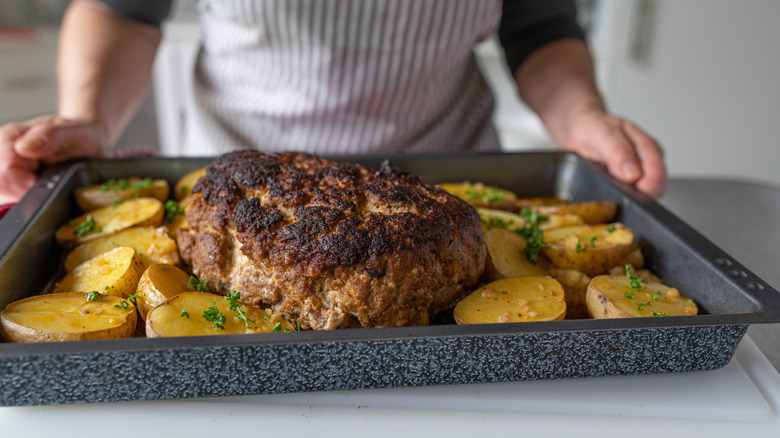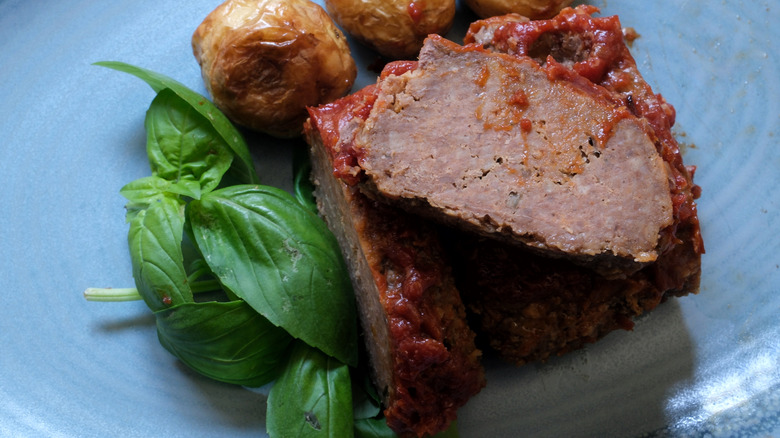The Secrets To Making A Perfect Meatloaf
If you are on the search for the most comforting American dish, meatloaf is sure to be at the top of the list. This classic has been gracing tables for centuries and is mainly associated with large gatherings and family-style meals. The main attraction might be its unpretentious character and effortless ability to feed a crowd, but it is also incredibly versatile and worthy of a scrumptious feast.
Making meatloaf is seemingly simple; all you have to do is dump the ingredients in a bowl, mix, shape, and bake. But everyone who has tried to make it will tell a different story. There are many perilous moments in the process that easily result in dry, crumbly, or overly mushy loaves. You probably have a favorite recipe that has been used for generations, but there is always room for improvement.
Here are some meatloaf-making secrets that are easy to follow and require no special culinary skills. This practical guide will smoothly lead you through the process of making the ultimate meatloaf — one with a firm foundation, tons of flavor, and a distinctive mouthwatering quality.
Use a combination of lean and fatty meat
As meat makes up the majority of the dish, it's crucial to choose the best cut that results in a tender and moist meatloaf. Many types of meat can work well, however, beef is still unparalleled if you want a classic, old-school version. Turkey has become a standard for those who prefer subtle flavors and fewer calories, and venison is an excellent alternative with lots of flavor and less fat.
To get the most out of your beef meatloaf, you'll need to use the optimal combination of lean and fatty meat. The goal is for the meatloaf to stay compact and hold its shape, while still retaining all the juiciness and additional flavor from fat. Ideally, you want to use around 70 to 80% lean meat and a fattier proportion for the remainder. Most standard ground beef falls into this category, but always check the label on the package as the percentages vary. Ground chuck is an excellent option if you want to know the specific cut that goes into the mix. It is usually 80% lean but can also vary, so read the label carefully. If you are working with leaner beef, consider mixing it with pork. As it is generally fattier than beef, it can deliver the required flavor and juiciness.
Make sure you add enough eggs
Eggs are one of the standard ingredients in classic meatloaf recipes. Technically, you can make the dish with a suitable egg replacement, but skipping them altogether is not recommended as they have several purposes. Primarily, they act as an adhesive element. As eggs naturally coagulate when heated, they will help the meatloaf retain its form and stay compact. The cohesion is firm but light enough to keep the structure tender. Eggs will also increase the moisture content, ensuring the meatloaf does not dry out. Lastly, they will make your meatloaf more flavorful and deliver supple richness.
For the perfect meatloaf, you want to ensure you add the right amount of eggs. This can be tricky to determine, but a classic ratio is to use one egg per pound of meat — though this can vary depending on the type of meat you use. If you are working with leaner cuts, adding more eggs helps increase the fat content and in turn the moisture and juiciness. Essentially, you should be guided by the result you want to achieve. Reduce the amount for a sturdier texture, and add more eggs if you want a loose meatloaf.
Mix lightly and shape the meatloaf loosely
Though it is often underestimated, your mixing technique can significantly affect the texture of your meatloaf. The secret is to use a light hand. Vigorously squishing and squeezing ground meat is not a good approach as it releases all the juices you are trying to keep inside the loaf. Mixing enables the proteins to bind together, but you want to avoid an overly firm cohesion or the result will have a dense texture once the meatloaf is baked.
Working the mix with your hands will often lead to this, so the best method is to use a fork to incorporate the ingredients without applying unnecessary pressure. The trick is to only mix until all the ingredients are evenly combined and then stop. Shaping might be the last step in the process, but it is no less important. Whether using a pan or making a free-form version, you'll want to gently shape the loaf and avoid compressing or cramming it inside the pan. Loosely shaped meatloaf will hold its shape, but it will also have a much more tender texture when you cut into it.
Add some bacon to the meatloaf
Bacon is a staple ingredient in many kitchens, but it is not always associated with meatloaf — apart from the genius bacon-wrapping technique. If you always have a stack of bacon ready to be fried up for breakfast, consider repurposing it. Bacon might just be the secret ingredient that transforms your meatloaf from good enough into a five-star dish.
It is best to finely chop the bacon or use a food processor to trim the strips into smaller bits. Additional frying is unnecessary as the bacon will cook inside the loaf. All you have to do is add the pieces directly to your classic meatloaf mix so they can infuse into the whole loaf, imparting earthy and smoky flavors that pair well with ground meat. Apart from evident flavor qualities, the fat will also provide extra moisture, making the meatloaf tender and juicy.
Bacon works well with all types of meat, but it is especially welcome when working with lean beef, chicken, or turkey. These options tend to have a significantly lower fat content, so they will certainly benefit from an additional boost.
Adding stock can make it more juicy
Some liquid is often added to meatloaf, and although stock is not usually listed in classic recipes, it can be a game-changer when it comes to flavor and texture. Stock will increase the moisture and help your loaf stay juicy. It will also enable other ingredients to blend better, creating a more cohesive loaf. But stock also comes out as a winner in the flavor department. It imparts layered and complex tastes, creating an assertive flavor profile and giving the meatloaf a more robust character.
While stock is more often found in traditional meatloaf recipes, you can also add other liquids to your meatloaf to up the flavor. Tomato juice is an unexpected option that helps balance this rich recipe thanks to the bright, acidic, sweet flavor; it also offers a similar taste to the traditional addition of ketchup without the extra sugar. The liquid from your favorite salsa also fits the bill, but often with the extra flair of added spice.
Adding red wine can also deliver better balance thanks to its acidity — and has the added perk of helping tenderize the beef for an even more melt-in-your-mouth meatloaf. All of these liquids can also be utilized in a meatloaf sauce to serve atop the finished dish.
Let the flavors blend before cutting
When you take your perfectly baked meatloaf out of the oven, your initial instinct may be to cut into it instantly — but resist the urge. There is a list of reasons as to why you should let it sit for a while, most notably that immediately slicing into it can ruin the loaf and send all your effort down the drain. Meatloaf does not stop cooking as soon as it comes out of the oven. The temperature within the loaf will stay high so the meat will continue to cook and set. Slicing it right away will result in a crumbly meatloaf with slices that cannot hold their shape.
The heat will also keep all the meat juices inside. Cutting into the loaf too soon will release them before the meat and the binders have the chance to soak them up. Essentially, you will have a crumbly, dry meatloaf and a puddle of flavorful juice at the bottom of the pan. The resting period also allows any excess fat to escape the loaf. The best method for success is to let your meatloaf rest on a wire rack so the fat doesn't collect around the bottom, making it mushy and soggy.
Soak the fillers before adding them
Fillers and extenders are a mandatory component of a meatloaf. Ground meat cannot be baked for a long time in the oven and still hold its shape, so you need something to keep it together. Breadcrumbs are the most common addition, ranging from dry store-bought versions to homemade and freshly blitzed in a food processor. Regardless of which you choose, you should always soak them before incorporating them into the meat. The best option is to use milk, which has the benefit of lending some fat to make a juicer meatloaf.
Breadcrumbs are just one of many options you can opt for. Cut-up fresh bread and oats are also standard, but recipes are brimming with alternatives such as crushed crackers, panko crumbs, or crumbled cornflakes. If you want a gluten-free, low-carb meatloaf, go with crushed pork rinds. Even soup mixes can make a good substitute for breadcrumbs.
Most of these alternatives will benefit from a soak, but make sure to adjust the rest of the ingredients depending on the filler you choose. For example, if you choose saltines, modify the total amount of salt. Apart from milk, try soaking the fillers in cream for a more luscious result, and buttermilk, stock, and even water will work too.
Sauces and condiments can boost flavor and juiciness
Smothering ketchup over meatloaf has long been a secret trick among home cooks, but it would be a shame to ignore the potential it has inside the meatloaf. For a juicer and more succulent version, try adding ketchup to the meat mix. This versatile condiment is brimming with sweet, earthy, and subtly tart notes, infusing the entire loaf and contributing to the overall flavor. The classic tomato version is the safest way to go, but spicy or herb-flavored ketchup could also perform well.
While you are at it, don't restrict yourself to ketchup. There are many other sauces and condiments that can easily upgrade your meatloaf by delivering spice, tang, and aromatics. A dash of Worcestershire or soy sauce will give the meatloaf complexity and a distinctive umami touch. Barbecue sauce is a natural partner with ground meat, and it's an excellent choice if you want a touch of smokiness. Unexpected additions, like pre-made onion soup mixture, can also give your meatloaf a surprising twist. A blend of delicious spices like dried onion flakes, beef bouillon, paprika, and celery seed complement other meatloaf ingredients like onions, ketchup, and breadcrumbs, for added umami flavor. You can also add it to the meatloaf sauce, too.
Ground meat is a great canvas to play with, so don't be afraid to test your other favorite sauces and condiments. Apart from the flavor kick, these add-ins will also provide moisture.
Don't leave the meatloaf in the oven too long
Meatloaf is usually shaped into a big hunk of meat, which can be tricky to bake correctly. Often, the temperature is set too high, so the center does not have time to cook thoroughly before the top burns. Meanwhile, if the temperature is too low, the exterior will not develop a nicely browned crust. The secret is to bake your meatloaf at 375 degrees Fahrenheit for a perfectly baked center with a slightly firmer, caramelized crust.
Apart from the ideal temperature, it's crucial that the meatloaf does not stay in the oven for too long. House ovens are finicky and each has its own way of functioning, so relying on a defined baking time is challenging. But there is a very simple solution: a kitchen thermometer. This convenient gadget should be a required tool when making meatloaf. It is the easiest and safest way to ensure the meatloaf is baked so you can pull it out at the right time. The center of the loaf should reach 160 degrees Fahrenheit or above. After that point, take out your loaf and it will be baked but remain moist and juicy. Remember that the meatloaf will continue baking long after it leaves the oven.
Add sauteed veggies to your meatloaf
Incorporating vegetables into meat-based dishes is usually a good idea. They can improve flavor, texture, and aroma — not to mention, they provide a welcome nutritional boost. Adding vegetables to meatloaf is not unheard of, but the secret is to saute them before incorporating them into the mix.
Raw veggies can affect the texture of your loaf as they will not incorporate well, especially if they are not finely cut. The last thing you want to see is a piece of onion breaking up the meaty blend. They can also be too dry and end up soaking up the meat juices. All these perils can be avoided with a short saute, preferably in olive oil. The veggies will be much softer and easier to combine, and the extra oil and juices can go straight into the loaf.
Mushrooms make a great option, and even the simplest button mushrooms are aromatic with earthy qualities that pair well with ground meat. They are also a desirable choice in meatloaf recipes because they pack a ton of liquid, which can contribute to the moisture content. At the same time, their soft texture will help the loaf stay tender. You can saute sliced mushrooms before adding them to the mix, but pulsing them in the processor and adding them directly to the meat is also an excellent method.
Upgrade the meatloaf glaze for even more flavor
A glaze on top of meatloaf is not a novelty, but the secret is to spruce up a classic recipe. Ketchup may be the reliable, all-time favorite, but it can easily be upgraded for even better results. A touch of brown sugar for additional caramelization or a splash of spicy sauce can easily upgrade your glazing game. Add vinegar if you like zing, or include a spoonful of garlic or onion powder for more fragrance.
If you are not a fan of ketchup, there are many other possibilities to opt for and flavor combinations to play with. Using balsamic vinegar as a base or additional ingredient will turn this glaze into an intensely flavored coating packed with complex aromas. Barbecue sauce is a great option for those who like depth paired with smokiness, while a mustard-based version is ideal if you prefer a distinct kick. Asian-inspired interpretations made with soy sauce or hoisin are creative alternatives that complement ground meat. You can also add extras to your chosen sauce base; fruits like apples or peaches add sweetness and a hint of acidity. Mushrooms have plentiful umami that complements the ground beef. Explore different flavor combinations to make your basic meatloaf recipe feel gourmet.
Wrap the meatloaf with bacon strips
Ground meat and bacon are familiar partners with a similar flavor profile that's accentuated by smoky bacon notes. Some meatloaf recipes will rely on this tried-and-true partnership, and if you want to create the ultimate meatloaf, you should too.
Adding bacon bits to meatloaf has already been described as a way to get more flavor, but making a bacon-wrapped meatloaf recipe will help lock in all the moisture and flavorful juices. The bacon will crisp up as the meatloaf bakes, providing a delicious crunchy coating to pair with the tender meat. It will also lend some flavor, and the rendered fat will infuse the loaf and amp up the texture. Bacon can be lined on top, but you can easily weave the slices if you want to create a stunning visual display. A bacon-wrapping technique can work with all types of meat in the meatloaf, but it is especially tasty if you are working with a lower fat meat.
Breadcrumbs help hold the shape and lock in moisture
Breadcrumbs have a somewhat misunderstood role in meatloaf. As they are so brittle and dry, most people think they will make your mixture dry and crumbly. The reality is quite different. Breadcrumbs are labeled as a filler or a binder, meaning they hold everything together, so be sure not to skimp and reduce the amount the recipe calls for. The secret to a firm and stable meatloaf is a hefty amount of breadcrumbs. If you want to incorporate more liquid with your crumbs, be sure to soak them first as described.
In addition to the stability feature, breadcrumbs attract and soak moisture from the loaf. Meat is not so good at preserving its juices, and most of it will run out during baking. Thankfully the breadcrumbs will play a vital role and absorb them all up. This means that all those flavorful baking juices will remain within your loaf, producing a delicious and juicy result.
Bake the meatloaf on a sheet pan
It's no surprise that most meatloaf recipes call for the dish to be prepared in a loaf pan. But there's another, arguably easier way to cook your meatloaf to achieve a crispy exterior: a sheet pan. Unlike a loaf pan, a sheet pan allows more of the meatloaf's edges to be exposed to the oven's heat. This helps all sides of the meatloaf to get that satisfying crunch that's usually only found on the top. If you're using a sauce, it also ensures that it caramelizes on all sides, too.
In addition to improving the texture, cooking a traditional meatloaf recipe on a sheet pan instead allows the meat to cook more quickly. Because all of the sides (except the bottom) are exposed to the open air, it also cooks very evenly and allows you to more easily gauge when the meatloaf is cooked through. Be sure the internal temperature of your meatloaf reaches 160 degrees Fahrenheit for a safe, delicious dinner.
Make extra for delicious leftovers
Going through all of the effort to make a delicious meatloaf can be time-consuming, but luckily, it's easy to make extra and eat it throughout the week to enjoy it day after day. Once cooled, wrap the meatloaf in plastic wrap and store it in an airtight container. Be sure to put it away within an hour or two of cooling to prevent harmful bacteria from forming that can lead to nasty food-borne illnesses. When properly wrapped, it lasts well up to four days (and some people think it even tastes better leftover).
If you don't think you'll get to it within that time frame, traditional meatloaf recipes can also be frozen for longer-term storage. Once cooked,it just needs to be eaten within a few months, making it perfect for fast and delicious weeknight dinners. Reheat it in the oven, or fry it in a skillet on the stovetop for extra-crispy slices.
